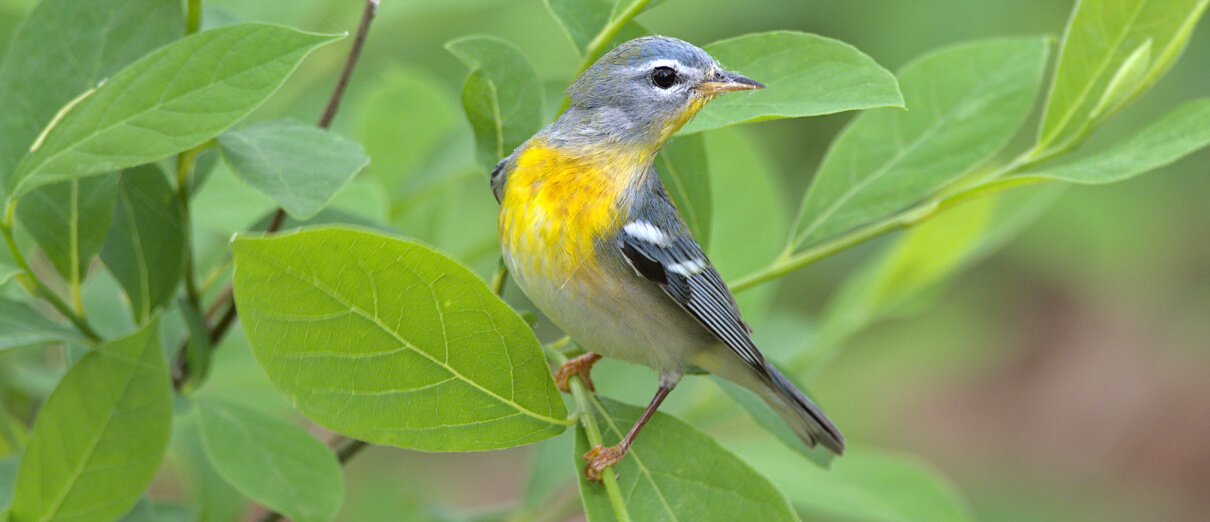What is the Northern Parula
It is common for birders to saying, “Look, there’s a Northern “Pa-RU-la, the ‘PAIR-a’-la’ or ‘PARY-la. ‘” No matter how it’s pronounced in the end, you can tell that the Northern Parula is a beautiful and well-known wood-
warbler when you can flex your neck to look at it flit across the trees.The species is most often found in the East during the period from spring to autumn This 4.5-inch-long songbird is characterized by a short tail,
blue-gray-colored head, and an unstraight, bright yellow breast and chin that are in contrast to its whitish flanks and belly.Be sure to notice its unique brilliant
white and shorter wingbars
as well as the white arcs just above both eyes. If you can see the top part of the bird, you’ll notice another excellent field marker -the back patch of olive-green.
Males of adulthood have an imposing and distinct chestnut-and-black breast band. Female parulas’ coloring is more muted, grey than blue and do not have the breast band. The birds that are first-years resemble females, however they have more greenish hues on their upperparts. birds facts
There are various sources that say the proper pronunciation the correct pronunciation is “PAR-you-lah,”and “PAR-a-la.” In either way the accent will be on the first sound. Parula Parula is an abbreviated form of Parus which is the name of the taxonomic family Paridae which
comprises chickadees and Titmice
. This means that Parula is actually “little titmouse” even it is true that Parula is actually referring to a “little titmouse.” Northern Parula is a member of the family Parulidae which includes the wood-warblers. Note: Paridae versus Parulidae.
Are you confused? Don’t be. While all wood-warblers belong within the Parulidae family in relation to the names that are common in English there is only one parula left, one called the Tropical Parula. Close to the Northern parula, it breeds in the south of its cousin all the way from South Texas to central South America.
The Northern Parula was not always recognized by its rather baffling name. The naturalist of the eighteenth century Mark Catesby called the species “Finch Creeper” and John James Audubon and Alexander Wilson identified it as”the “Blue Yellow-backed Warbler.”
Restless Foliage Haunter
It is believed that the Northern Parula is an active forager. In its pursuit of small invertebrates it usually travels to the outside branches of the middle-to-upper tree canopy. In the course of migration, parulas seek out food within the substory. Be on the lookout for them fluttering around the branches’ tips when they hunt for their prey. More
Northern Parulas hop quickly through branches and fly swiftly with beats of their wings. They usually be in pairs or on their own when breeding and form mixed-species colonies with other warblers in the migration season and in winter.
Songs and Sounds
Through the high branches of The canopy Northern Parulas are known to sing repeatedly and again again frequently alternating two songs of different types. Most often, they sing an ascending buzzy insect-like trill, which rises to an abrupt conclusion.
All over the range of the species Males can be heard singing both the song that is rising in addition to one slow and less level. Knowing both of these songs is an excellent method of identifying the species.
Breeding and Feeding
The courtship and bonding behaviors in Northern Parulas have not been studied extensively, however males protect their nesting grounds by singing and chase. The species is considered to be socially monogamous.
Male and female remain together throughout the nesting season, taking care of the babies in their nest. However, some cases of polygamy were reported.
The most popular nesting spots are in rivers or in swamps within mature and mixed woodlands in particular those with hanging epiphytes like Bearded or Lace Lichen as well as Spanish Moss. The nest is typically found at the bottom of a branch that is between six and 100 feet over the surface.
Also Read

